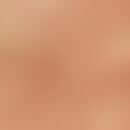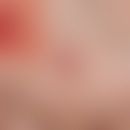Synonym(s)
DefinitionThis section has been translated automatically.
Worldwide infection with puffer mites (Pyemotes tritici; grain itch mite; straw itch mite) on contact with grain, bean plants or straw. Strawflower beds are known to be the starting point of small endemics.
PathogenThis section has been translated automatically.
You might also be interested in
LocalizationThis section has been translated automatically.
ClinicThis section has been translated automatically.
A few hours after exposure: severe pruritus, wheal formation, possible papulo-vesicular or purple transformation, decrease within 14 days General symptoms such as fever, tachycardia, lymph node enlargement, oedema, proteinuria, eosinophilia, asthma possible.
TherapyThis section has been translated automatically.
Since humans are false hosts, the mites remain on the human body for only a few hours to days. Therefore, the treatment is symptomatic. It is important to show the connection between the Pyemotes tritici mites and the skin symptoms. The sources of infection are to be avoided.
External therapyThis section has been translated automatically.
Internal therapyThis section has been translated automatically.
LiteratureThis section has been translated automatically.
- Grob M, thorn K, lute beater S (1998) Grain dross. A small epidemic by Pyemotes species. dermatologist 49: 838-843
- Uenotsuchi T et al (2000) Pyemotes dermatitis caused by indirect contact with husk rice. Br J Dermatol 143: 680-682
Incoming links (7)
Acrodermatitis urticaroides; Barley dross; Eosinophilia and skin; Mites; Pediculoides ventricosus; Pyemotes mites; Trombidiosis;Outgoing links (7)
Antihistamines, systemic; Glucorticosteroids topical; Hydrocortisone; Hydrocortisone emulsion hydrophilic 0.5-1; Pruritus; Trombidiosis; Urtica;Disclaimer
Please ask your physician for a reliable diagnosis. This website is only meant as a reference.




